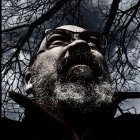Noctilux f/1 soft?
-
Recently Browsing 0 members
- No registered users viewing this page.
-
Similar Content
-
- 91 replies
- 18,120 views
-
- 39 replies
- 5,086 views
-
- 11 replies
- 833 views
-
- 1 reply
- 244 views
-
- 4 replies
- 290 views
-




Recommended Posts
Join the conversation
You can post now and register later. If you have an account, sign in now to post with your account.
Note: Your post will require moderator approval before it will be visible.